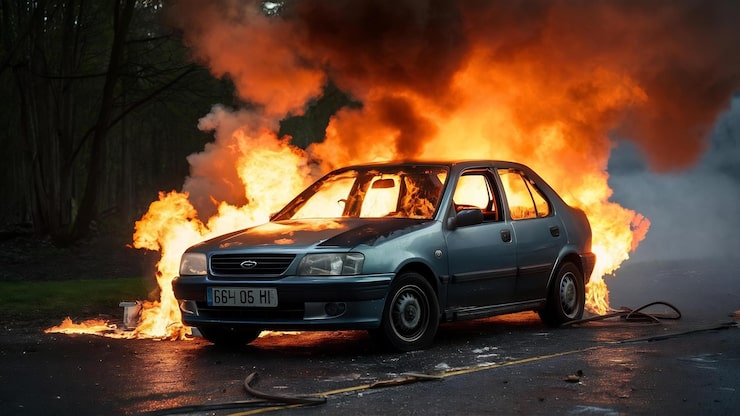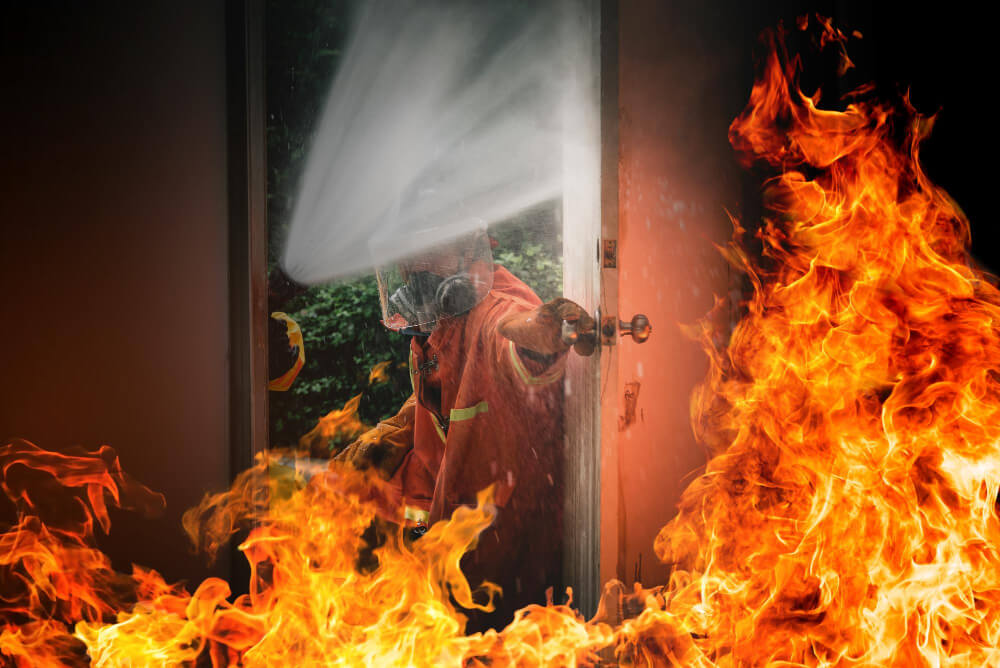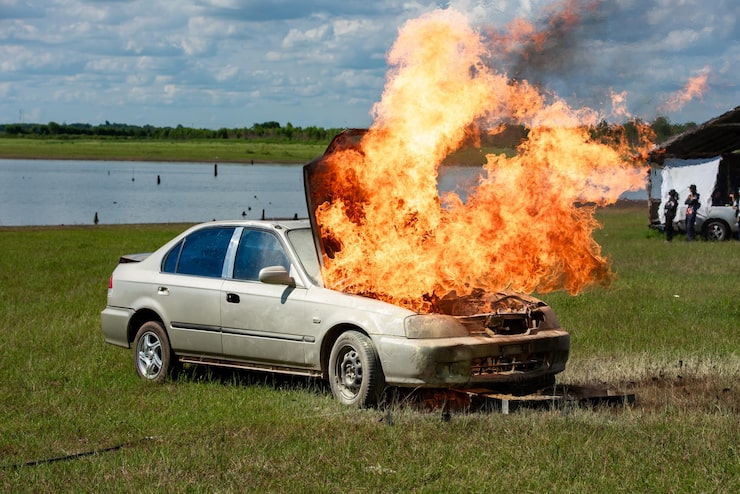
Chemistry Behind Car Fire Suppression
Car fires are not only dangerous, they’re also chemically complex. Combustion is a reaction series between oxygen, heat, and fuel. To stop a fire, you must cut off these reactions at a molecular level. This blog takes you inside the chemistry of suppression, with an explanation of how new car fire prevention systems prevent fires by using advanced chemical suppression agents to snuff out fires in a millisecond. We’ll also examine the role of integrated systems like Auto Burn Stop, which combine predictive detection with the automatic release of extinguishing compounds. If you’ve ever wondered how an automated safety system actually stops a fire, this science-based article explains it all.
Combustion Chemistry in Confined Vehicle Spaces
A fire begins when heat, oxygen, and fuel combine, known as the fire triangle. In cars, this often involves flammable liquids like gasoline, vapors, plastics, and synthetic fabrics. The combustion of these materials produces high temperatures and toxic byproducts such as carbon monoxide and hydrogen cyanide (Fire and Materials Journal, 2022).
Because of the closed nature of engine compartments and cabins, fires often intensify quickly. Traditional extinguishers can’t act fast enough in these confined environments. That’s why vehicle fire prevention requires rapid response solutions based on reaction chemistry.
Systems like Auto Burn Stop are engineered with this principle in mind. When a fire starts, its sensors trigger the deployment of chemical suppression agents that interfere with combustion chemistry. The automated safety system neutralizes heat or displaces oxygen, halting the reaction at its source.
Types of Chemical Suppression Agents and Their Roles
There are three primary classes of chemical suppression agents used in vehicle systems: dry powders, clean agents (like halocarbon gases), and foam compounds. Each works differently:
- Dry powders (e.g., monoammonium phosphate) smother flames by interrupting the chemical chain reaction.
- Clean agents (like FK-5-1-12) remove heat and displace oxygen without leaving residue.
- Foam compounds create a physical barrier between fuel and air.
The choice of agent depends on the type of fire, Class A (solids), Class B (liquids), or Class C (electrical). Auto Burn Stop uses a blend of these chemical suppression agents, deployed automatically via its onboard automated safety system, guided by real-time sensor data.
This multi-agent approach increases the effectiveness of vehicle fire prevention, especially in mixed fire environments like hybrid engines and EV battery packs.
Smart Delivery Systems: Timing Is Everything
In modern automated safety systems, the timing of suppression is just as critical as the agent itself. A delay of even 5-7 seconds can result in full engine compartment involvement. Therefore, delivery systems are designed for speed and accuracy.
Auto Burn Stop features a network of pressure-regulated pipes and electronically controlled valves. Once a thermal or chemical trigger is identified, the automated safety system activates the corresponding nozzles, releasing the specific chemical suppression agent to the exact risk location.
This targeted, zone-based suppression reduces waste, improves effectiveness, and aligns with best practices in modern vehicle fire prevention. The process is entirely autonomous, ensuring intervention occurs even if the driver is incapacitated or unaware of the fire.
Scientific models (Fire Safety Science Proceedings, 2023) support this rapid deployment model as a key factor in reducing both injuries and total vehicle loss.
Environmental and Regulatory Considerations
While effective, not all chemical suppression agents are environmentally safe. Older models like Halon were phased out because they also caused ozone depletion. Low-GWP agents like Novec 1230 or AFFF-free foams are currently utilized in compliance with international safety and environmental standards.
Auto Burn Stop aligns with regulations set by Transport Canada and UL/CSA standards, incorporating eco-friendly agents while ensuring full vehicle fire prevention compliance. Its automated safety system also includes leak-check protocols and safety valves to prevent accidental discharge.
This convergence of performance and responsibility reflects the future of fire suppression: systems that are fast, smart, and sustainable.
Predictive Chemistry
The next frontier in vehicle fire prevention is predictive suppression, triggered not by active flames, but by pre-ignition chemical patterns. This includes detecting hydrocarbon vapors, elevated heat rates, or abnormal pressure buildups before combustion occurs.
Systems like Auto Burn Stop are evolving in this direction. By monitoring air composition, humidity, and component temperatures in real-time, its automated safety system can predict and suppress fires chemically before ignition. This uses advanced sensors tied directly to the control unit responsible for deploying the appropriate chemical suppression agents.
As science progresses, fire suppression is moving from reactive to preventive, from analog to intelligent. It’s chemistry with foresight, and that’s what truly saves lives.
Conclusion
Suppressing a car fire is not just about putting it out, it’s about breaking down a complex chemical reaction before it completes. That’s where modern vehicle fire prevention excels. With systems like Auto Burn Stop, we’re seeing the fusion of sensor technology, predictive analytics, and fast-acting chemical suppression agents controlled by a centralized automated safety system.
By attacking combustion at the molecular level and reacting faster than human reflexes, these systems will be the future of car safety. To understand this chemistry is not only to the benefit of engineers but also enables all of us to demand better from our cars and protect what matters most.



